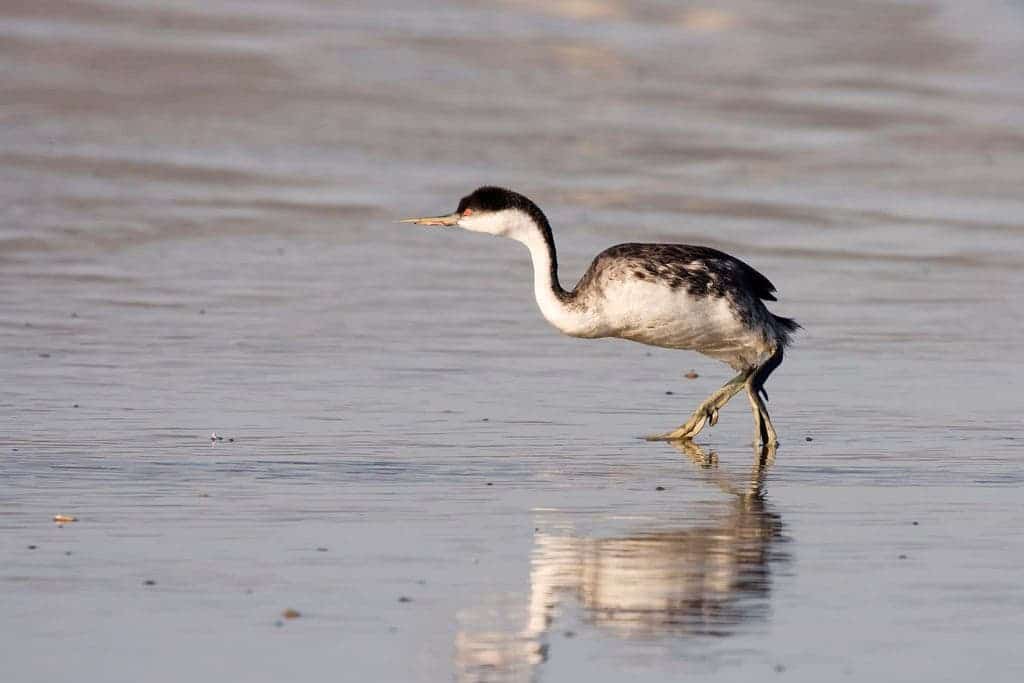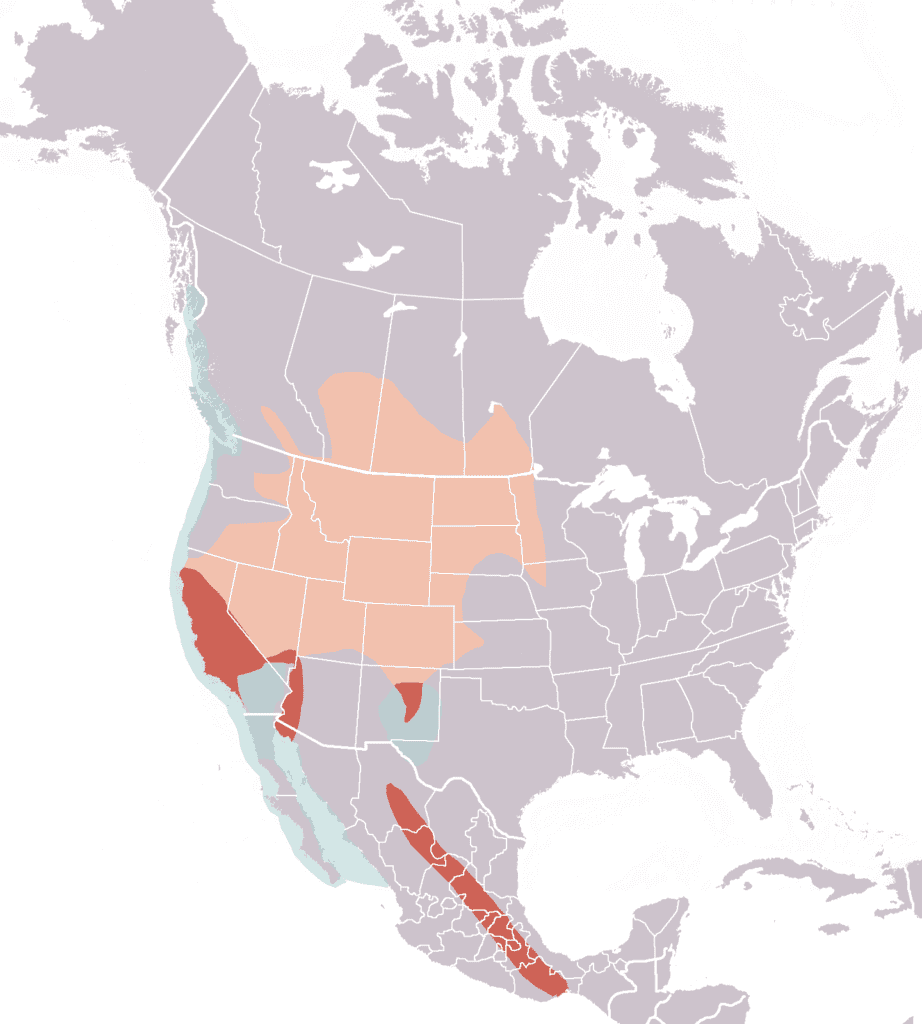Western Grebes famously walk on water to impress mates, but few people have ever seen them walk on land. At one point, it was even thought that they can’t walk on land properly — but this video proves otherwise.
Western Grebe. Video: Mick Thompson/Eastside Audubon.
Western Grebes (Aechmophorus occidentalis) have a long, slender, swan-like neck and red eyes. They nest in colonies on lakes that are mixed with marsh vegetation and open water and are much less nimble on the ground. Even renowned ornithologist David Sibley wrote about this in his Sibley Guide to Birds, noting that they are “incapable of walking.”
But in 2012, photographer Larry Engles managed to photograph a Western Grebe walking upright, prompting a response from Sibley:
“In the Sibley Guide to Birds I wrote that Western and Clark’s Grebes are “incapable of walking”. I thought they could only push themselves along on their bellies, but I should have known that I was flirting with danger by writing such an absolute statement. Soon after the book was published I heard that they are capable of walking, although they do it rarely and it’s not very easy for them.”
Well as it turns out, Western Grebes can indeed walk, not only on water but also on land — and there’s more than photographic evidence of it. Oh yes, there’s also video evidence.

Western Grebe (Aechmophorus occidentalis) clumsily trying to make it back into the surf on Morro Strand State Beach in Morro Bay. Image credits: Kevin Cole / Wikipedia.
Engles’ friend Mick Thompson, a photographer and board member of the Eastside Audubon Society, managed to catch the footage above on the beach in Ocean Shores, Washington. “He just jumped up and started running up the beach,” Thompson says.
This extremely rare behavior was likely caused by the fact that the bird was bolting towards the sea, but unlike other birds (like ducks, for instance), Western Grebes can’t take off from the ground, they need a water runway, so it was forced to head to the water as fast as it could — and that particular specimen proved to be capable to make a bipedal escape.

Western Grebes have two subspecies — A. o. occidentalis, which can be found in western Canada & United States (California, Utah), and A. o. ephemeralis, western Mexico (Mexico Plateau). They’re not particularly difficult to see in their natural habitat, so if you’re into birding, there’s a good chance to catch them on camera.


